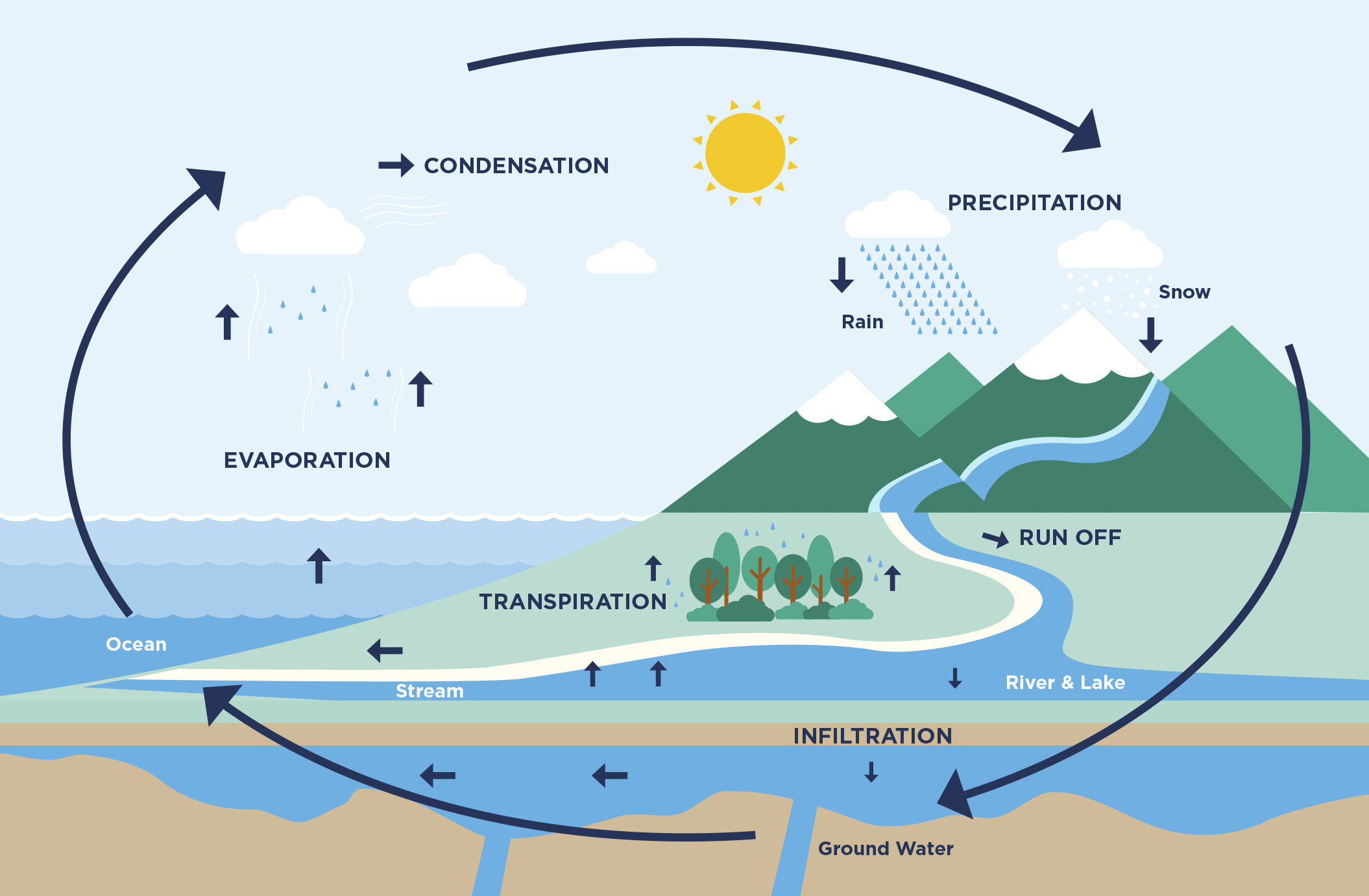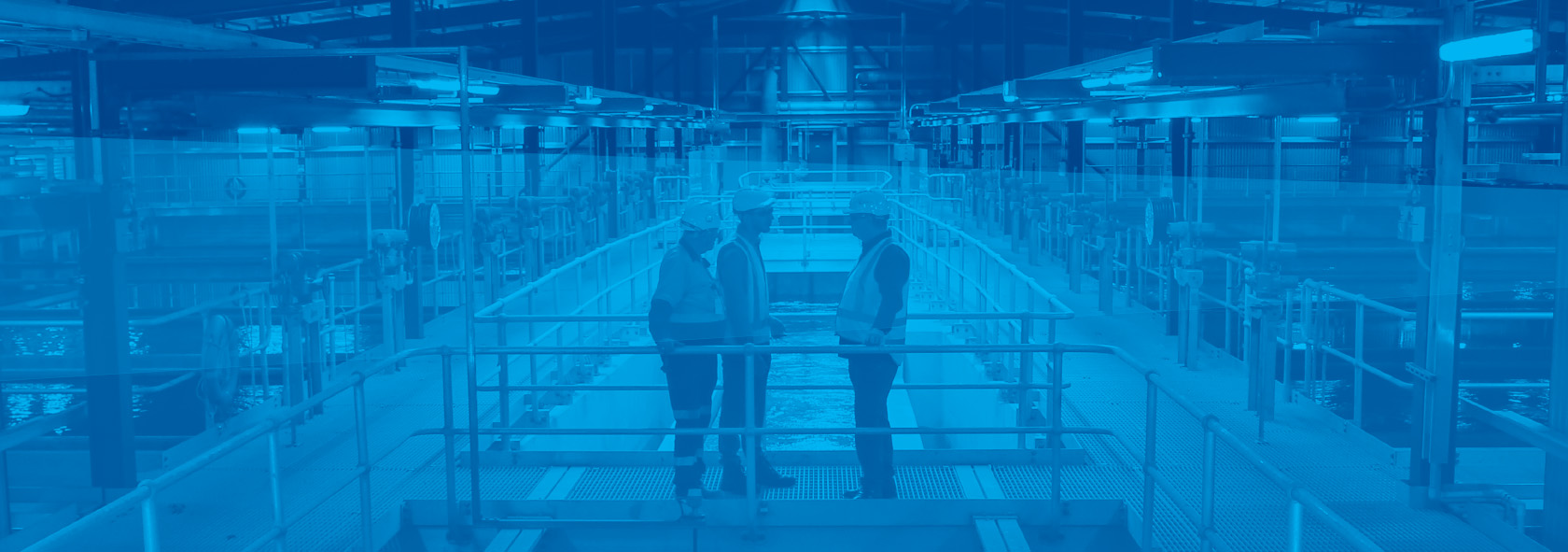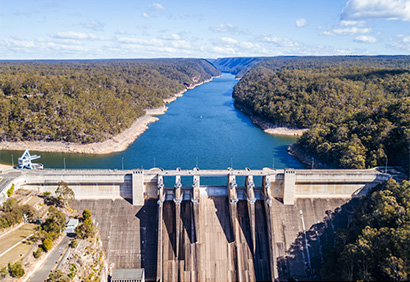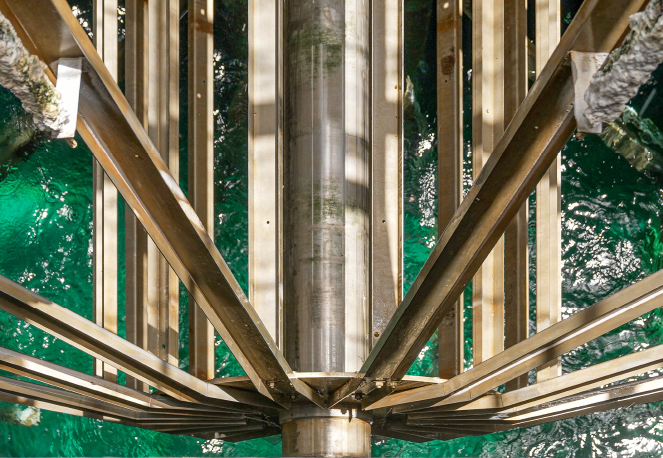As the sun warms water in the oceans, rivers and lakes, water vapour rises into the atmosphere.



Water is a valuable resource that we all rely on. However, while most of our planet is covered in water, only a tiny fraction (about one per cent) of that precious resource is suitable for people and animals to drink.
We all rely on what’s known as the natural water cycle and the managed water cycle to supply us with enough fresh water to drink, grow produce and feed our animals.
Below is a brief explanation of how these cycles work – and how desalinated water fits into the picture.



The natural water cycle
For billions of years, water has been moving between the land, rivers, oceans and atmosphere. This process is known as the natural water cycle, which enables water to be recycled as it changes from solid to liquid to gas.

The key steps in the natural water cycle are:
Evaporation
Transpiration
Plants absorb water from the ground and release it as water vapour through their leaves.
Condensation
Once the water vapour is in the sky, it cools and transforms back into tiny liquid droplets that form clouds.
Precipitation
Water from those clouds falls as rain, hail, sleet and snow back down to Earth.
Infiltration
Some of the rain is absorbed into the ground.
Run off
The rest of the water flows into creeks, rivers and oceans.



The managed water cycle
To make sure people have a constant and reliable supply of fresh drinking water, dams, reservoirs, treatment plants, and desalination plants have been built in urban areas. These pieces of important infrastructure are at the heart of the managed water cycle, which also includes wastewater and stormwater systems.
Dams
Storage dams hold large volumes of water to be used over long periods of time. In Sydney, most of the city’s drinking water supply comes from Warragamba Dam.
Water filtration plants
Water is transported from dams or pumped rivers or extracted from underground aquifers to filtration plants so any contaminants can be removed and treated to destroy viruses, bacteria and microbes. Chlorine and fluoride are added before the water is sent to reservoirs and pipes for distribution to homes and businesses.
Desalination plants
Seawater is collected from the ocean
and filtered to remove any solid particles before being treated in line with water quality standards. Given the threats posed by climate change, desalination plants are becoming increasingly important rainfall-independent water sources in Australia and around the world.



Other
resources
View fact sheets on the history of desalination, the process of turning seawater into drinking water, and how SDP helps local wildlife.
Find out moreOur operator
We work with the world's largest water company to deliver high-quality drinking water.
Find out moreOur local environment
Our site is home to a range of native wildlife, which we carefully monitor.
Find out more


Frequently Asked Questions
- Is the Sydney Desalination Plant operating?While the Plant was originally designed to operate only in times of drought, it has remained operational since 2019 to help address several storage dam water quality issues arising from bushfires, flooding and significant maintenance tasks in Sydney Water’s supply network.
The Sydney Desalination Plant’s WICA Network Operator’s Licence enables the Plant to remain operational, recognising that the Plant has always been, and will continue to be, an essential component of Sydney’s water management and an integral part of our city’s water-resilient future. - How much water does the Plant produce?The Plant can provide up to 15 per cent of Sydney’s average drinking water needs without any reliance on rainfall.
It treats, filters and re-mineralises seawater to produce up to 91.25 gigalitres per annum of high-quality drinking water.
Under our WICA Network Operator’s Licence, the Plant will operate on a “flexible full-time basis”, producing between about 20 gigalitres to 91.25 gigalitres every year. - What does desalinated water taste like?Sydney Desalination Plant water is treated to taste the same as Sydney’s other drinking water.
Like dam water, water from the desalination plant is treated to meet Australian Drinking Water Guidelines, which makes it among the best in the world. - Who owns the Plant?Sydney Desalination Plant is jointly owned by the Ontario Teachers’ Pension Plan Board and the Utilities Trust of Australia, which is managed by Morrison. Find out more on our About Us page.
- Why is desalination important?The Sydney Desalination Plant is Sydney’s only major sources of non-rainfall dependent drinking water. It is one effective way of securing Sydney’s water supply against the effects of climate change and natural disasters and the increase in demand due to population growth, warmer weather and urban greening projects.
While the Plant was originally designed to respond to Australia’s severe millennium drought, recent experiences have demonstrated that drought is only one type of event that requires support from the Plant to ensure clean and safe drinking water for Greater Sydney.
The Plant has been a reliable drinking water supply during floods and bushfires, which caused water quality challenges from time to time in Sydney’s storage dams. - Where does the water go?The Plant can supply water to homes and businesses south of Sydney Harbour and as far west as Bankstown, as part of all their water supply.
Sydney Water uses a variety of water sources to supply customer needs. Where your water comes from depends on demand and where in Sydney you live.
If you live in the blue-shaded area on this map, you may receive water from the dams, the Sydney Desalination Plant or a combination of both. The Plant's water proportion will change throughout the day due to variations in supply and demand.
Everyone will benefit from desalination because it allows more water to be left in the dams, which means a more secure water supply for Sydney. - How much energy does the Plant use?The Sydney Desalination Plant requires roughly 38 megawatts at full production and is 100 per cent powered by renewable energy.
The average energy needed to provide drinking water to one household is about the same as the energy used to run a household fridge. - What’s the impact on the environment?Sydney Desalination Plant places a high priority on minimising any environmental impacts – both on land and in the water.
To support this, the Plant has put in place a world first stringent six-year marine environment monitoring program. The marine environment was monitored for three years before construction and three years after the Plant became operational. It demonstrated that the Plant has minimal effect on the marine environment.
On land, a third of the Plant site at Kurnell has been maintained as a conservation area. This area is protected, and native species of flora and fauna are regularly monitored. This includes a program to survey the numbers of grey-headed flying foxes and green and golden bell frogs in the area.





